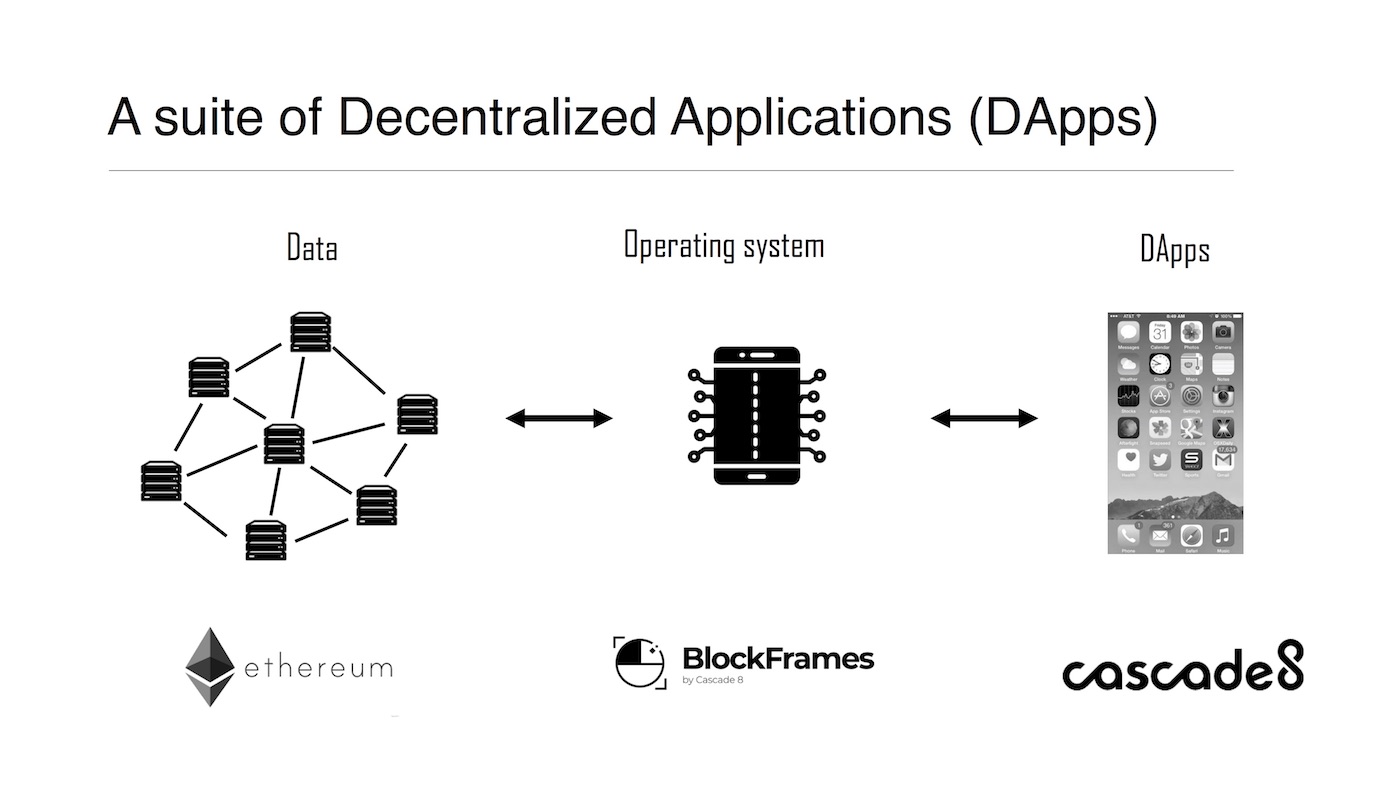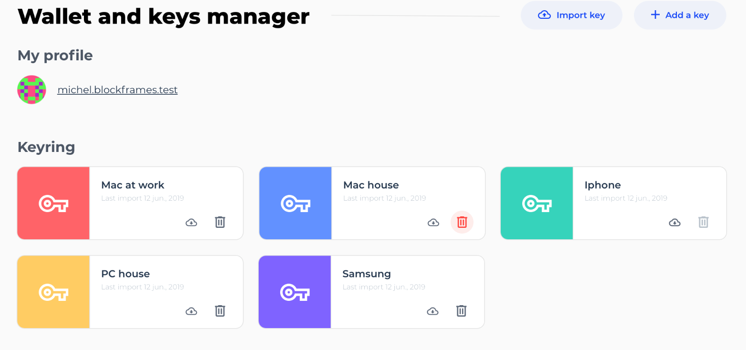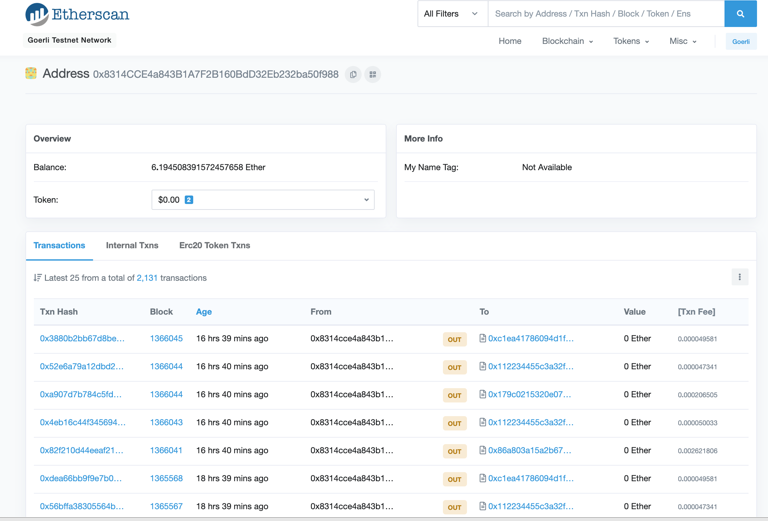Reports Previous Workshops
Ninth Workshop – 25 to 27 September 2019 in Potsdam, Berlin
Module 4.2: Blockchain as a part of the workflow
Vincent Choukroun, Project Manager Cascade 8/Logical Pictures (France)
(see PDF)
Introduction
Module 4.1. introduced a lecture by someone who is working with blockchain on the metalevel, dealing with the general concepts, how to implement blockchain within the film industry and how to work on the political and institutional level to ensure the necessary standardization.
Module 4.2 takes another look at blockchain to further explore its potentials and challenges:
- Is its implementation as simple as announced?
- How does blockchain differ from the digitization that funding bodies have already been implementing?
- How can the different funding bodies synchronize their efforts to make sure that their blockchains enable international co-production?
Module 4.2. introduces a blockchain expert, Vincent Choukroun, coming directly from the industry and representing manufacturers of applications that can be put into use. His lecture rather provides an idea about the practical use of the blockchain interfaces in a daily business.
My company, Cascade 8, was established in January 2019 as one of the subsidiary companies of Logical Pictures, a French equity fund that created several other companies1 within the same media group called Logical Media Group. Therefore, we have developed applications together with these companies.
In my presentation, I take a basic TCP/IP protocol as an example of the practical use of the blockchain technology. I will present several use cases that can give a taste of a practical use of blockchain in the every-day life.
Our first blockchain platform was called BlockFrames and it came out in September 2018. It is a royalty distribution system based on blockchain. What is innovative about it is the fact that it is decentralized, transparent, automatic and temper-proof. After BlockFrames, our goal was to create a suite of decentralized applications (DApps)
Therefore, we have developed three new DApps which will be presented at Berlinale in 2020:
- The first one called Media Financiers, is intended for high-net-worth individuals and assures transparency when it comes to receiving revenues.
- The second one called Media Delivery, is a collaborative platform for managing film material delivery schedules. Made for sales agents, this App follows what happens with the multiple films from their catalogues in all kinds of territories.
- The third one called Bigger Boat, allows right-owners to send packages to SVoD platforms and TV channels through secure traceable transactions. The Apps like Bigger Boats are interesting also in a sense that thy help us combat large US digital platforms.
1 such as distribution company The Jokers and the sales agency Pulsar Content

Blockchain Use-Cases in Cascade 8’S Dapps:
Use-Case No.1: Digital Signature
Blockchain includes countless transactions. Every time there is a transaction on a blockchain, there must be somebody – either a person or a software – who will sign it with the digital signature. The digital signature helps track almost any action that someone is doing. However, we make sure to feed the blockchain only with relevant information about the relevant, specific actions.
For example, in the Media Delivery App we record only the notifications of the revenues, because they trigger payments. The information about signed distribution agreement is fed into blockchain in case of the Bigger Boat App. When it comes to the BlockFrames App that deals with royalty payments, we record on blockchain whenever somebody accept to make payments.
The picture below shows the interface you use to sign a transaction with the digital signature. To sign a transaction, you need a key which is actually your ID. The problem is that if you lose the key, you lose your identity. Therefore, you can (and should) create as many keys as you want on many devices, so even if you lose one, you can still use another one to sign a transaction. It takes around 10 seconds to sign the transaction on blockchain. Once you sign an agreement in this way, the blockchain records it.

Use-Case No.2: Certified Register
You can use blockchain to register many things in a credible way. Most often, it is about registering financial transactions (the case of the BlockFrames DApp). However, one can also register information about a delivery workflow (Media Delivery DApp) or information regarding the sale of a film (Bigger Boat DApp).
Etherscan is an example of a website where you can find the certified register of all the transactions from the beginning of the production (see picture below).

Use-Case No.3: Automated Programs
The blockchain with smart contracts was created in 2015. It can be used for recording the information about the revenue-sharing and for managing the recoupment waterfalls (BlockFrames DApp). In the case of the Media Delivery DApp, the user can trigger specific actions through automated programs. If a delivery is accepted, then user should trigger payments.
The above three, and countless other, use-cases indeed announce a radically new landscape which could come soon. It has a potential to bring three major improvements to the film industry.
- The whole contractual film ecosystem (chain of titles, etc.) would be accessible at glance.
- Furthermore, there would be an easier access to the information about the revenues. Funds who want to allocate grants based on the revenues, would be able to use blockchain to obtain the most accurate information without a fear that the producers cheated in their reports.
- Finally, blockchain would show every company’s history and every person’s professional career in a form that could be fact-checked.
Suggestions for Public Film Funds
- Public film funds should establish themselves a legal framework for a blockchain covering the chain of title and revenue allocations. They should not allow private companies do this work and profit from it.
- Funds should create oracles (information-feeders) for issued certifications, allocated subsidies, granted amounts and festival award. It helps in feeding the blockchain with true information and prevents cheating. Private companies cannot be always trusted.
Q & A with Vincent Choukroun
- You mentioned registers of statements that are encrypted. But what happens if two statements contradict each other?
- VC: The thing with blockchain is that it is not informative, but based on the actions. To give you an example, let’s say that a French distribution company claims it sold a film for three thousand euro to Canal+. We will wait for Canal+ to validate this information before we feed it into blockchain. No action is recorded in blockchain unless all the stakeholders linked to a specific statement have validated it.
- Should we establish a non-profit association of film funds that would engage in an inter-disciplinary conversation about how to standardize data and funds so they benefit more from the blockchain technology?
- VC: The French CNC has already done some works in terms of standardization. They created a specific register (RCA)2 of all the contractual information related to the projects that received their certification that they want to put on blockchain. I hope that every European country will do the same in the near future. However, the fact that here are many ways to record information in blockchain poses a challenge. Everybody will be using blockchain, but the question is how? and how to standardize it across European countries? That is why the funds need to work together and create one standard. Otherwise, everybody will be using blockchain, but one will be in German, one in English, one in French, etc. …and there will be difficulties to understand the things within each other’s blockchain, which would be a pity.
2 The cinema and audiovisual registers (RCA), created by a law of February 22, 1944, are managed by the CNC. The Cinema and Audiovisual Registries service publicizes acts, conventions and judgments relating to the production, distribution, representation and exploitation of cinematographic and audiovisual works.
The public film funds’ experiences with new players and forms of content, their impact on funding schemes and their responsibility towards the industry in the 21st century
- Module 1 – Platform Economy
- Module 2.1 – New Formats
- Module 2.2 – Group Exercise: Format Development
- Module 4.1 – Digitisation From Application to Distribution
- Module 4.2 – Blockchain as a part of the workflow
- Module 4.3 – Group exercise: block chain as part of new funding schemes. Supporting new formats and platform distribution
- Module 5 – Sustainability: Surviving the 21st Century
- Module 6 – Free Flow: What Do You Think?